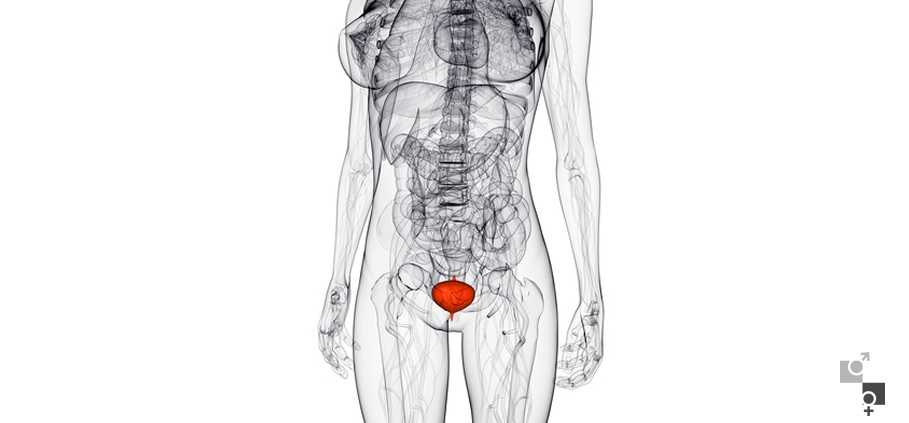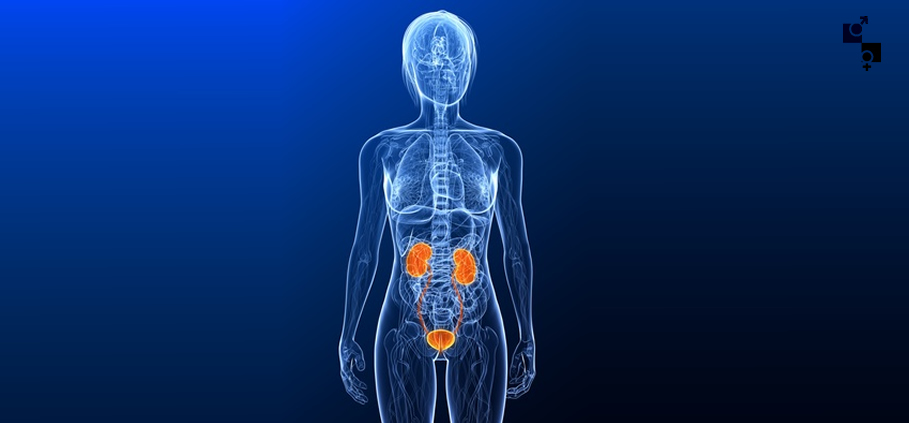Gynaecological Urology
-
Sexual Dysfunctions in Women
- •Sexual Desire - Excitement Disorder
- -Decreased Libido
- -Sexual Aversion
- •Orgasm Disorder (anorgasmia)
- •Loose Vaginal Tissue
- •Sexual Pain Disorder
- -Dyspareunia
- -Vaginismus
Sexual Desire Disorders
The sexual desire disorders in a person depend on many factors, such as long-lasting abstinence, interpersonal differences with the sexual partner, fatigue, stress, chronic anxiety, Religious and Social taboos, lack of education around sex. The causes may be physical (vascular, neurogenic, hormonal, chronic diseases, use of pharmaceutical substances, underlying malignant diseases of the lower urogenital system), psychogenic (depression, performance anxiety) or aging.
-Decreased Libido: Difficulty in, or absence of, sexual fantasies and desire for sexual activity. Treatment is administration of medication or surgical operation.
-Sexual Aversion: Aversion to or avoidance of contact with the genitalia and any sexual contact, either with a partner or via self-satisfaction. Treatment is administration of medication or surgical operation.
Orgasm Disorder (anorgasmia)
Repeated delay or absence of orgasm after a normal sexual excitement. The causes may be physical (vascular, neurogenic, hormonal, chronic diseases, use of medical substances, infections, undercurrent malignant conditions of the lower urogenital system), psychogenic (depression, performance anxiety) or advanced age and cause difficulty in interpersonal relationships and intense subjective embarrassment. Treatment may be pharmaceutical or surgical.
Loose Vaginal Tissue
This problem is a problem of health and a taboo. It concerns women of all ages and directly affects their psychological state and their sexuality. Some of the causes is pregnancy, childbirth, menopause, obesity, smoking, constipation, chronic cough and prior surgical operations (hysterectomy). It occurs when one of the organs of the female pelvis (uterus, urinary bladder etc.) projects or prolapses from the vagina opening. Some women don’t have symptoms, some others feel a “stoppage” sensation in the genital organs area, or a feeling that something prolapses in their vagina. Other symptoms are urinal or excremental incontinence, difficulty in urination, interrupted urine flow, constipation, pain – pressure – irritation in the vagina, vaginal hemorrhage, pain during sexual intercourse, and a tension sensation in the genital area. The surgical treatment of the problem is brief, and the result is spectacular and obvious from the very first moment.
Sexual Pain Disorders
-Dyspareunia: Continuous or intense pain in the genital organs during sexual intercourse. The causes may be physical (vascular, neurogenic, hormonal, chronic diseases, use of medical substances, infections, undercurrent malignant conditions of the lower urogenital system), psychogenic (depression, performance anxiety) or advanced age and cause difficulty in interpersonal relationships and intense subjective embarrassment. Treatment may be pharmaceutical or surgical.
-Vaginismus: Continuous or intense involuntary spasm of the vaginal walls which interferes with intercourse. Its treatment is surgical.
Urinary Incontinence Females
Urinary incontinence is a condition in which there is unwilling leakage or loss of urine from the urethra, either continually or intermittently. Incontinence is not a disease, but rather a result or symptom of another medical problem, consequently the focus during the examination of a patient suffering from incontinence is on the identification of the incontinence type and its real cause. Urinary incontinence is categorized into:
- -Stress Incontinence
It is the involuntary loss of urine upon increase of the intra-abdominal pressure (cough, laughter, childbirth, menopause etc.). It occurs to 5-7% of the female population. The main damage is caused by the loss of the normal urethral resistance (outer sphincter failure) due to improper support of the bladder neck and the urethra.
- -Urgent Incontinence
As such is defined the involuntary loss of urine after intense urge to urinate and inability to voluntarily suspend detrusor contraction. It can occur after urinary tract infections, bladder stones, radiotherapy exposures of the area etc.
- -Over-flow Incontinence
It occurs when the intraabdominal pressure exceeds the maximum urethral resistance. The causes of this condition may be the use of certain medications, diabetes mellitus, or a surgical operation in the pelvis etc.
- -Total Incontinence
It is the incontinence type which can occur all the time and under any conditions.
- -Mixed Type Incontinence
It is the co-existence of two types of incontinence in the same patient.
- >Acute cystitis
It is the commonest form of urinary infection and is especially observed with women, while in men it is usually secondary infection. The symptoms are frequent urination, burning sensation upon urination and pyuria. In severe cases there is also hematuria and rarely fever (in this case the infection has been spread to the kidney or the prostate). It is treated with administration of medication.
- >Chronic cystitis
When the acute cysticis turns chronic due to ineffective treatment and poor hygiene. It has mild symptoms, such as mild pain, frequent urination, pain in the low abdomen. The symptoms are much milder than those of acute cystitis. Treatment is via administration of medication. It is also imperative that there be correct diagnosis and treatment of the agent that causes or sustains the condition.
- >Interstitial cystitis
The causing agents of this type of cystitis are unknown. The symptoms are persistent and intense. There is no evidence in the urine and the condition does not remit with the usual treatment, on the contrary it is difficult and painful.
- >Alcaline Encrusting Cystitis
A bacterial infection of the urinary bladder caused by urea-splitting organisms. These change the Ph of the urine into alkaline and cause calcification of bladder areas, resulting in the creation of crystalic and calcareous depositions in the bladder.
- >Cystic Cystitis
A rare form of cystitis, characterized by the creation of small cysts in the mucosa and the submucosa. It is caused by various bacterial agents.
- >Eosinophilic cystitis
Another rare entity. It is probably an immunological reaction of the bacterial agent and is characterized by eosinophil concentration in the bladder mucosa.
Menopause
It is the decline and suspension of estrogens production and marks the end of reproductive period. The result of the hormonal changes is dryness and atrophy of the vagina. There is pain during sexual intercourse and this is one of the main causes of sexual dysfunctions in women. Despite the fact that the vagina loses its elasticity, the ability to reach orgasm remains.
Other conditions of the 3rd age that can be the cause of sexual dysfunctions are:
- >Diabetes
- >High blood pressure
- >Metabolic syndrome Μεταβολικό σύνδρομο
- >Cardiovascular diseases Καρδιαγγειακά νοσήματα
- >Atherosclerosis
- >Obesity
- >Mental disorders
Also the use of certain medications used for the above conditions can cause sexual dysfunction to the patients.



